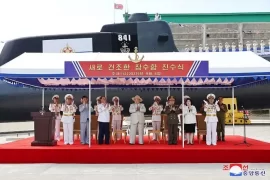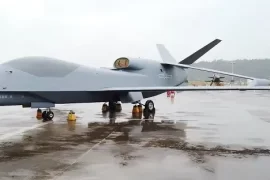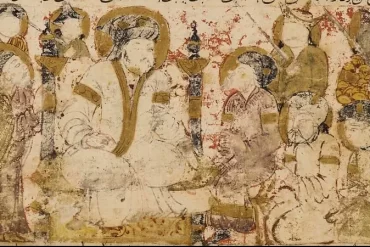India and China, two of the world’s most populous countries and emerging global powers, share a long history of cultural, economic, and diplomatic ties. However, the border dispute between the two nations has been a persistent issue that has strained their bilateral relations and occasionally led to military conflicts. The India-China border dispute has its roots in historical, political, and strategic factors, and its timeline spans several decades. Let’s take a closer look at the key events and developments that have shaped the India-China border dispute.
Pre-Independence Era
The origins of the India-China border dispute can be traced back to the late 19th and early 20th centuries, during the era of British colonial rule in India. In 1914, the British colonial government in India and the then Republic of China signed the “Simla Accord” to define the border between British India and Tibet, which was a part of China at that time. According to the accord, the border was demarcated along the McMahon Line, which extended from the eastern Himalayas to the Bhutanese territory. However, China later repudiated the accord, and Tibet was subsequently occupied by China in 1950.
Post-Independence Era
The border dispute between India and China intensified after India gained independence from Britain in 1947 and China became a communist state in 1949. In 1950, China occupied Tibet, which had traditionally maintained close cultural and religious ties with India. The Chinese occupation of Tibet raised concerns in India about China’s intentions and territorial claims in the border regions.
In 1954, India and China signed the “Panchsheel Agreement,” which emphasized the principles of peaceful coexistence and mutual respect for each other’s sovereignty and territorial integrity. However, tensions continued to simmer over the border issue, and in 1959, the Dalai Lama, the spiritual leader of Tibet, sought asylum in India, further straining India-China relations.
1962 Sino-Indian War
The most significant event in the India-China border dispute timeline was the Sino-Indian War in 1962. The conflict erupted on October 20, 1962, when China launched a military offensive across the disputed border with India. China swiftly gained control of land in both areas within a week. These areas were previously administered by India. In response to New Delhi seeking military aid from Washington, China declared a unilateral ceasefire on November 21, 1962. Subsequently, China annexed the Aksai Chin, the land it had captured in the western sector, but withdrew from the area it had taken in the eastern sector – Tawang, which is now located in the Indian state of Arunachal Pradesh. Following negotiations, Beijing and New Delhi agreed to a de facto boundary that emerged around a loosely agreed Line of Actual Control (LAC).
1993 Agreement and Confidence Building Measures
In an effort to address the border dispute and maintain peace along the border, India and China signed the “Agreement on the Maintenance of Peace and Tranquility along the Line of Actual Control (LAC) in the India-China Border Areas” in 1993. The agreement aimed to prevent any escalation of tensions and maintain peace along the disputed border. It also called for confidence-building measures, such as regular consultations between the two sides, exchange of information on military exercises, and avoidance of any provocative actions.
Since then, both India and China have engaged in multiple rounds of talks and negotiations to resolve the border dispute peacefully. However, progress has been slow, and the issue remains unresolved, with periodic military standoffs and border skirmishes continuing to occur.
Recent Developments
In recent years, the India-China border dispute has witnessed renewed tensions. In 2020, a major military standoff occurred in the Ladakh region between Indian and Chinese troops, resulting in a violent clash that led to the deaths of soldiers on both sides. The standoff was a significant escalation of the border dispute, and both countries deployed additional troops and military equipment to the region, raising concerns about a potential larger conflict.
Key events in the India-China border dispute from April 2020 onwards
April 2020: Approximately 30,000 soldiers from the People’s Liberation Army (PLA) are deployed along the Line of Actual Control (LAC), with military exercises being transformed into operational deployment by the PLA.
Early May, 2020: Chinese People’s Liberation Army (PLA) soldiers cross into several locations along the Line of Actual Control (LAC), including Gogra-Hot Springs, Galwan Valley, and Pangong Tso.
June 6, 2020: The initial round of discussions at the corps commander level takes place to deliberate on plans for de-escalation along the Line of Actual Control (LAC).
February 21, 2021: India and China have come to a disengagement agreement regarding Pangong Tso, whereby both sides have agreed to halt patrolling activities in the disputed areas until a final resolution is reached through future talks.
July 13, 2021: Chinese People’s Liberation Army (PLA) troops infiltrate Demchok and stage a protest against the commemoration of the Dalai Lama’s birthday.
July 26, 2021: Individuals claiming to be civilians from China cross into the Indian territory at Charding Nullah in the Demchok sector, where they set up tents and refuse to vacate the area.
September 12, 2022: Both Indian and Chinese soldiers have pulled back from the Gogra-Hot Springs area, but a deadlock persists in the Demchok and Depsang regions.
December 9, 2022: In the Tawang Sector of India’s northeastern state of Arunachal Pradesh, clashes erupt between troops as 300 soldiers from the People’s Liberation Army (PLA) attempt to cross the Line of Actual Control (LAC). During the confrontation, soldiers from both sides sustain minor injuries while facing off.
December 20, 2022: During the 17th round of discussions between the corps commanders, the parties were unable to reach a consensus to resolve the deadlock at Demchok and Depsang.
Summary of India-China border dispute timeline
The India-China border dispute is a long-standing issue that has its roots in historical, political, and strategic factors. The dispute has seen periods of tensions, conflicts, and negotiations over the years. While efforts have been made to resolve the dispute peacefully, a lasting resolution has not been achieved yet. The situation along the India-China border remains uncertain, and both countries need to continue engaging in meaningful dialogue, confidence-building measures, and peaceful means to resolve the dispute and maintain peace and stability in the region. A peaceful and mutually acceptable resolution of the India-China border dispute would not only benefit both nations but also contribute to regional and global stability.
India-China border dispute timeline: FAQs
Q: What was the border conflict between China and India in 1962?
A: The border conflict between China-India erupted on October 20, 1962, when China launched simultaneous military offensives in the eastern and western sectors of the disputed border with India. China swiftly gained control of land in both sectors within a week. Those areas were previously administered by India. In response to New Delhi seeking military aid from Washington, China declared a unilateral ceasefire on November 21, 1962. Subsequently, China annexed the Aksai Chin, the land it had captured in the western sector. But it withdrew from the area it had taken in the eastern sector – Tawang. Tawang is now located in the Indian state of Arunachal Pradesh. Following negotiations, Beijing and New Delhi agreed to a de facto boundary that emerged around a loosely agreed Line of Actual Control (LAC).
The war had a profound impact on India-China relations, leaving a deep scar in the collective memory of both nations. It led to a long-standing military standoff and a freeze in diplomatic relations between India and China for several years. Both sides continued to maintain a heavy military presence along the disputed border, and sporadic skirmishes occurred in subsequent years.








